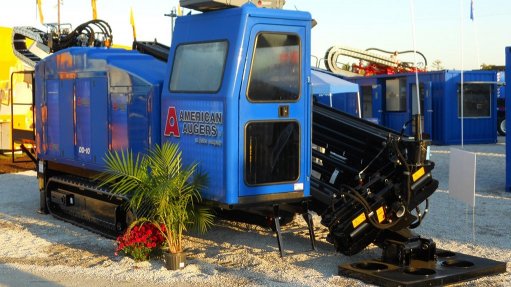
HORIZONTAL DIRECTIONAL DRILLING This method is becoming the preferred way of laying pipes, conduits and cables
A horizontal directional drill (HDD) operator management course has been developed to improve the skills and safety of operators in the field, as this method is becoming increasingly popular in built-up environments.
Original-equipment manufacturer (OEM) supplier of HDDs in Southern Africa Osborn is partnering with specialist supplier of HDD tooling products and provider of tooling courses to the Southern African market Terrawood to present the course in Johannesburg. The OEM of the HDDs is US-based Toro and American Augers.
The horizontal directional drilling Management Course enables candidates to understand the basic principles of HDD, the various methods used for the location of underground equipment and the regulations and operation guidelines of horizontal directional drilling.
In addition, the course aims to equip operators with the knowledge that will enable them to identify the different types of equipment and drilling fluid used and to develop a drill path profile in accordance with selected equipment.
“The first course took place over two days and trainees had the opportunity to view Osborn’s HDD range during a factory tour. The exams are marked in the UK and the course provides trainees with an internationally recognised City & Guilds qualification – a leading vocational education organisation,” says Osborn product sales manager Peet Venter.
The City & Guilds certification qualifies horizontal directional drilling as a skilled trade and an operator is trained to operate the equipment, analyse soils and steer the drill, as well as understand the health, safety and environmental hazards involved in horizontal directional drilling.
Horizontal directional drilling is a steerable trenchless method of installing underground pipes, conduits and cables in a shallow arc along a prescribed bore path using a surface-launched drilling rig.
This method causes minimal impact on the surrounding area and can be used under artificial and natural obstacles to lay equipment for water, gas, telecoms and electrical installations.